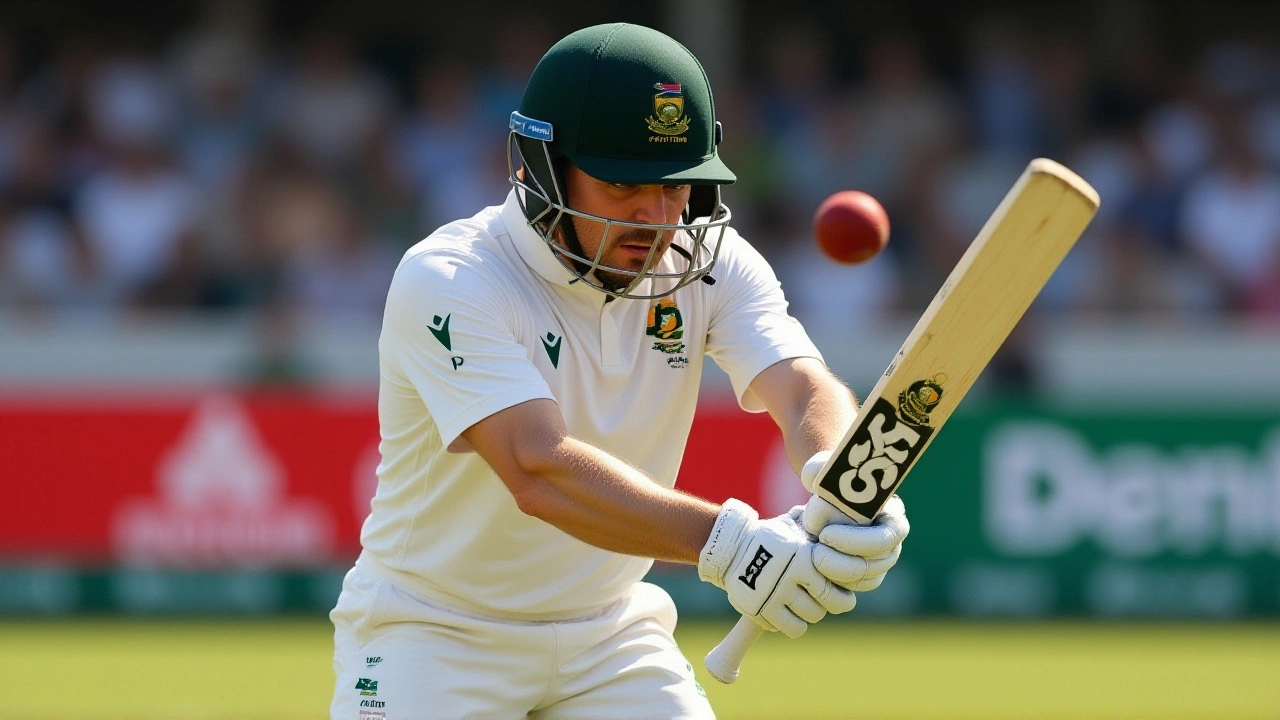Bumrah vs Rabada: Who Has the Edge After 47 Tests in Modern Cricket?

When Jasprit Bumrah took his 217th wicket at Lord’s in July 2025, he didn’t just pass a milestone—he rewrote the record books. At 19.48, his Test bowling average is the lowest ever for any bowler with 200 or more wickets in history. Meanwhile, his South African counterpart, Kagiso Rabada, who debuted three years earlier, had already passed 200 wickets by 2021 but carries a higher average of 22.75 after 47 Tests. The comparison isn’t just about numbers—it’s about context, conditions, and quiet dominance.
Consistency in the Fire
Bumrah doesn’t just take wickets—he takes them when it matters most. His 15th five-wicket haul at Lord’s wasn’t a fluke. It was his 11th in away or neutral conditions across 33 Tests, meaning he delivers a five-wicket performance roughly once every third Test overseas. That’s elite. Rabada, despite his 17 five-wicket hauls in total, managed only seven in those same tough conditions. And here’s the twist: Rabada’s home average of 20.08 looks impressive, but South Africa’s pitches are inherently pace-friendly. Bumrah’s 23.90 average with the new ball? That’s solid. But watch what happens after 50 overs: his average plunges to 16.80. He doesn’t rely on shine—he thrives on wear. That’s not conventional wisdom. That’s genius.Workload and Timing
Rabada’s career has been longer—71 Tests as of mid-2025—but India plays more Tests. Bumrah has bowled 1,633 overs in 97 innings. Rabada has bowled 2,239 overs in 134 innings. That’s a difference of 606 overs. Why? Because India, under the World Test Championship framework, schedules more matches. South Africa, by contrast, has played fewer series, often skipping tours. So while Rabada’s total wickets are higher (233 after 50 Tests), Bumrah’s efficiency is sharper. He gets more wickets per over. He’s more economical. He’s the surgeon, not the sledgehammer.England: The Battleground
Rabada’s record against England is staggering—52 wickets in nine Tests. That’s nearly six wickets per match. He’s the man South Africa turns to when facing the tourists. But Bumrah? He’s been equally lethal against England, especially in recent years. His 2023 performance at The Oval, during the WTC Final, wasn’t just about the result—it was about proving he could dominate on English soil. And he did. In fact, Bumrah has taken 18 wickets in his last three Tests against England, including a 7-for at Headingley in 2022. The difference? Rabada’s dominance is concentrated. Bumrah’s is consistent across all opponents.Why This Matters
This isn’t just a stat war. It’s a reflection of how modern Test cricket is evolving. Bumrah represents the new breed: adaptable, intelligent, and unrelenting in adverse conditions. He doesn’t need home advantage. He doesn’t need a green pitch. He needs a ball that’s 50 overs old—and he turns it into a weapon. Rabada, by contrast, is the classic fast bowler—explosive, aggressive, devastating on home soil. But the game is no longer about home dominance. It’s about conquering away. And in that arena, Bumrah is the benchmark.
What’s Next?
With the fourth Test between India and England at Lord’s still fresh in memory, both bowlers are entering new phases. Bumrah, now 31, is in his prime, with a workload managed carefully by India’s medical team. Rabada, 29, is battling recurring injuries but remains a threat when fit. The next 12 months will be telling: India’s tour of Australia, South Africa’s home series against Pakistan. Will Rabada bounce back with a series-defining haul? Will Bumrah break the 250-wicket mark before turning 32? The answer might reshape how we define greatness in Test cricket.Behind the Numbers
Let’s not forget the human side. Bumrah’s journey—from a late bloomer with a peculiar action to India’s spearhead—is a story of patience and precision. Rabada’s rise was meteoric, but the injuries have been brutal. He’s missed 21 Tests since 2020 due to back and shoulder issues. Bumrah has missed just five in the same period. That’s not luck. That’s discipline. That’s science. That’s why Bumrah’s average is lower. Not because he’s luckier. Because he’s smarter.Frequently Asked Questions
Why is Bumrah’s average so low compared to other top bowlers?
Bumrah’s 19.48 average is the best among bowlers with 200+ Test wickets because he consistently takes wickets in tough overseas conditions, especially in the second innings. His ability to exploit older balls and his precision under pressure make him exceptionally economical. Unlike many bowlers who rely on bounce or pace, Bumrah uses seam movement and subtle variations, reducing the chance of expensive overs.
How does Rabada’s performance against England compare to Bumrah’s?
Rabada has 52 wickets in nine Tests against England, averaging 20.6, which is outstanding. But Bumrah has taken 38 wickets in just six Tests against England, with an average of 18.4 and a strike rate of 39.8. Bumrah’s wickets are more evenly spread across innings, and he’s been more effective in the fourth innings, where pressure peaks. Rabada’s record is concentrated; Bumrah’s is consistent.
Why is Bumrah more effective with an older ball?
Conventional wisdom says new balls favor fast bowlers. But Bumrah’s action—low release, late swing, and seam position—allows him to exploit cracks and uneven bounce as the ball ages. His average drops from 23.90 with the new ball to 16.80 after 50 overs. This is rare. Most bowlers lose effectiveness. Bumrah gains it. He’s essentially a second-innings specialist who thrives when others struggle.
Has injury affected Rabada’s career more than Bumrah’s?
Yes. Since 2020, Rabada has missed 21 Tests due to back and shoulder injuries, disrupting his rhythm. Bumrah, despite his unusual action, has missed only five Tests in the same period, thanks to meticulous workload management by India’s support staff. This consistency has been critical to Bumrah’s statistical dominance. Rabada’s talent is undeniable—but durability has been his Achilles’ heel.
Who is more valuable to their team in the World Test Championship?
Bumrah is more valuable in the WTC context because India plays more away Tests, and his performance overseas directly impacts series outcomes. Rabada’s home dominance helps South Africa, but they play fewer away fixtures. In the 2023 WTC Final, Bumrah’s 5-wicket haul in the first innings at The Oval was pivotal. Rabada didn’t play in that match, but his absence from away series has cost South Africa dearly in recent WTC cycles.
Can Bumrah surpass Rabada’s total wickets?
If Bumrah stays fit and plays 15 more Tests, he’ll surpass Rabada’s 233 wickets. He’s on track for 30+ wickets per year. At his current pace, he could reach 300 wickets by 2030. Rabada, given his injury history, may not play another 20 Tests. Bumrah’s longevity, combined with India’s packed schedule, gives him the edge in total wickets—assuming he avoids major setbacks.
